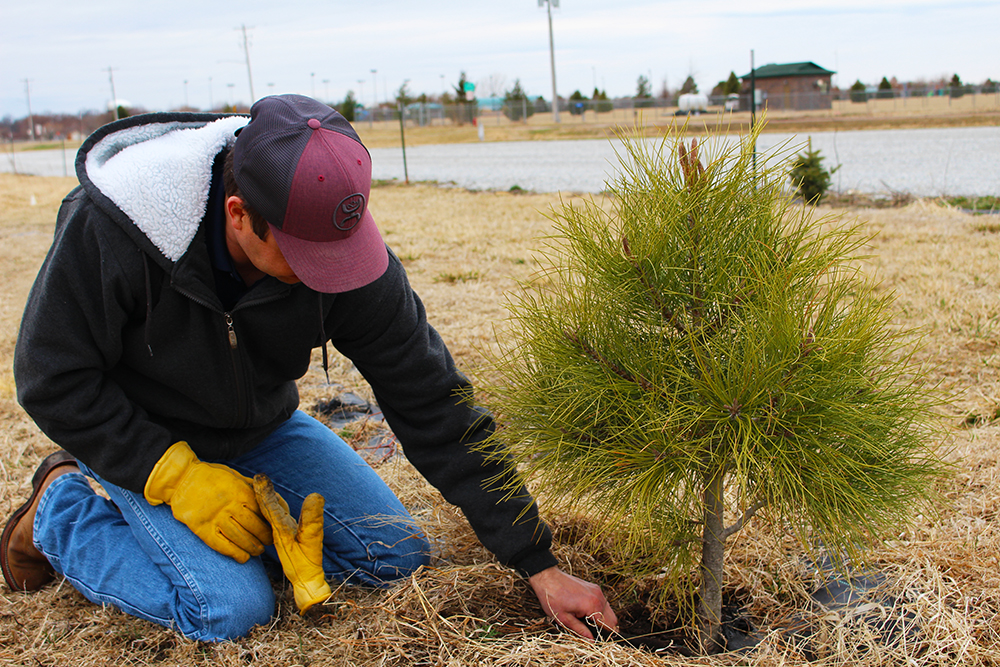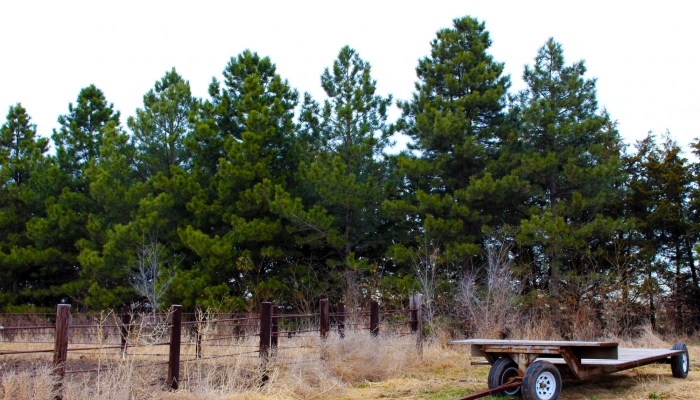Windbreaks 101
Few investments are as certain to produce a return as planting trees. In today’s instant gratification society, an investment that takes several years to pay dividends isn’t attractive to some. But those who know the enormous value of trees know that the best things come to those who wait.
The Upper Big Blue Natural Resources District is committed to helping district residents and landowners see the benefits available through tree planting. That’s why district forester Kyle Yrkoski was recently hired. A lifelong Nebraskan with his roots in agriculture, Yrkoski has a passion for conservation through tree planting. His family has farmed cattle and row crops in the Osceola area since the 1800s and has always been dedicated to planting trees and preserving wildlife areas.
Prior to his role as district forester, Yrkoski spent five years as a water technician for the Upper Big Blue NRD. He also has forestry experience from his previous years with the Upper Loup NRD in Thedford, Nebraska, where he was responsible for designing windbreaks and installing more than 200,000 trees and shrubs, with a 90% survival rate.
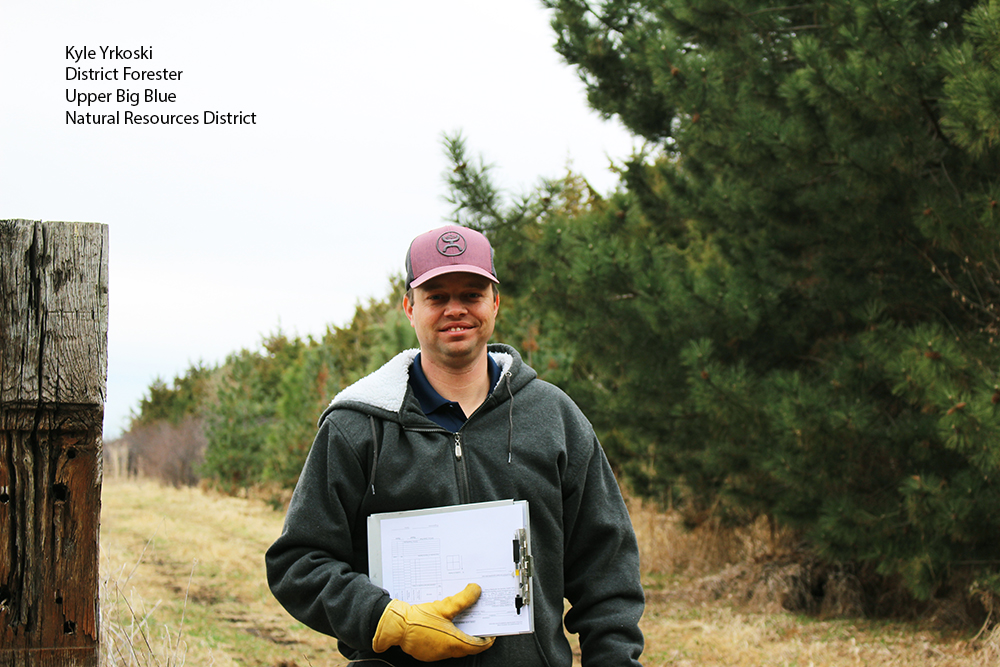
As spring approaches, Yrkoski is keeping busy helping landowners plan tree planting projects, whether that be installing a new windbreak in a field or shelterbelt around a home, expanding or repairing an existing windbreak, or planting a wildlife area to improve hunting opportunities.
There are many reasons to plant. Trees around homes conserve energy, improve working and recreational conditions, and provide visual screening and dust control. In an agricultural setting, they can block sound and odors, protect livestock, and increase the production of various crop and food products. The ROI of trees is easy to measure: the proximity of healthy, beautiful trees directly affects property value as good tree cover increases property prices by 7-18 percent, depending on the setting.
With all these benefits, plus countless more, the Upper Big Blue Natural Resources District wants to make it easy and inexpensive for district residents to improve their property through trees. That’s why they offer the annual Conservation Tree Program, providing low cost trees (as well as planting services for large projects). Orders will be collected through March 30 and trees will arrive in mid-April, just in time for spring planting. Call 402-362-6601 or visit www.upperbigblue.org/trees for more information.
The bare root seedlings the NRD sells each year through the Conservation Tree Program are small (usually about 18” high). While some people may choose to plant more expensive, larger landscaping trees purchased from a garden center, Yrkoski notes that the smaller NRD trees very quickly catch up to the more mature trees. “Just like with people, it’s easier to move when you’re younger,” he said. “The NRD trees are babies. It’s not such a big adjustment to move them and they will thrive. But the larger landscaping trees, it’s going to take them awhile to get established and start growing in a new location.”
There are cost-share funds available through the district’s Land Treatment Program for qualifying landowners for the installation or renovation of a windbreak, as well as for the installation of weed barrier around a new planting. Contact the NRD for more details or to apply.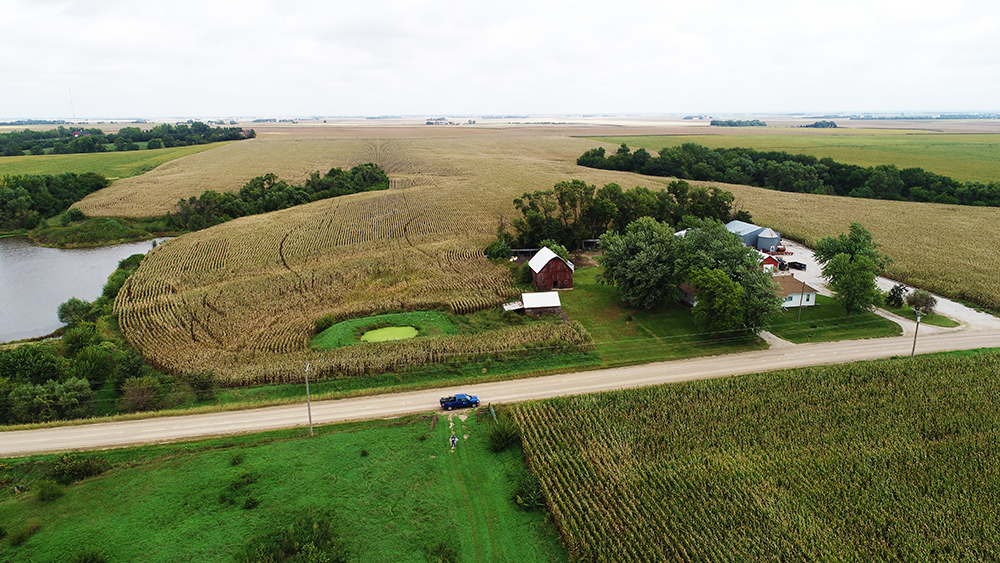
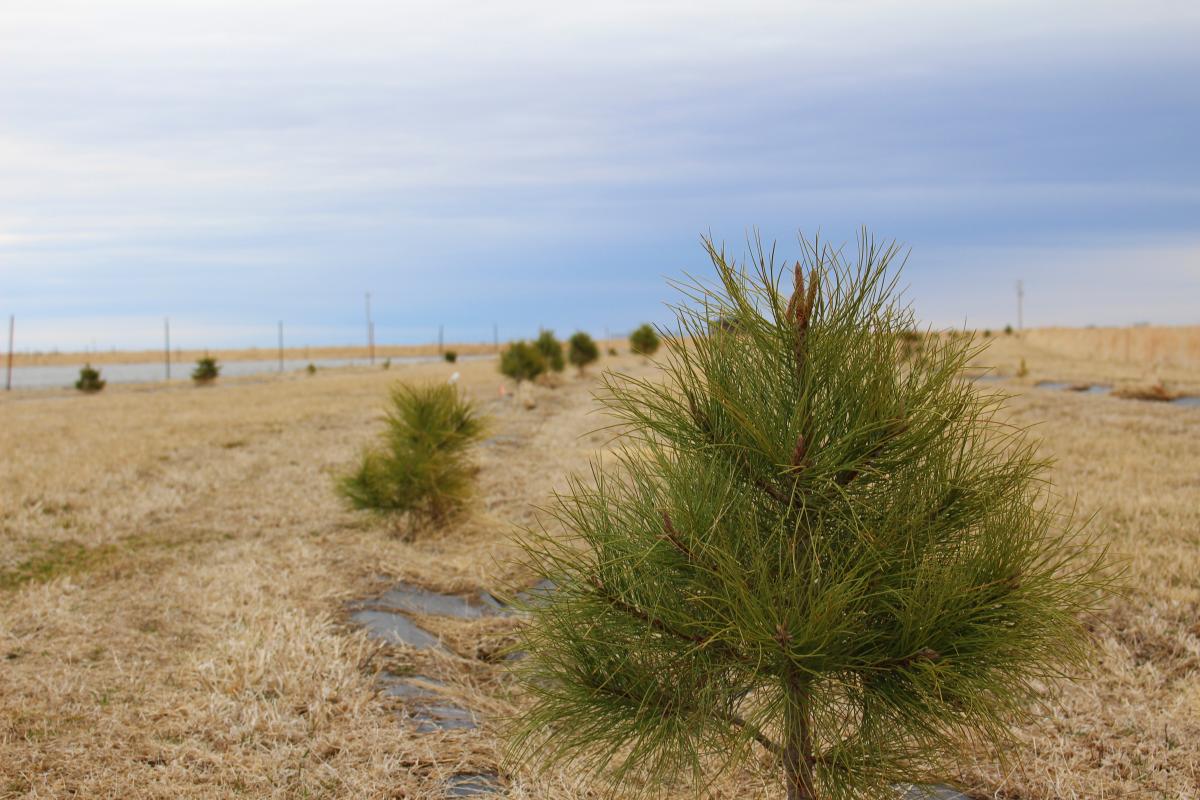
Many windbreaks planted in the 1930s and 40s are losing their effectiveness due to age, poor health, or neglect. All windbreaks, even well-designed ones, need regular maintenance in order to maintain their overall structure and to continue to function as effective wind barriers. Renovating a windbreak can be a difficult task. Help in assessing your windbreak and determining the best renovation techniques is available from the NRD.
Before you tear out an old windbreak, visit with the NRD to see what could be done to renovate it instead. Perhaps some rows could remain while others could be removed and replanted. New species could be introduced for new purposes. Even if the entire windbreak needs to be replaced, it is better to do it in stages, as the older trees will shelter the younger trees and help them get established more quickly.
Older windbreaks have unique benefits, as they are more likely to be adopted as shelter by hawks, owls, and cavity nesting birds. Snags are trees that have died and possibly lost limbs, but the tops are still standing. Snags are great for wildlife. If they are not where they pose a safety hazard, consider saving part of an older windbreak for wildlife. Owls, woodpeckers, and chickadees will thank you for the additional foraging and shelter.
For the best wildlife benefits, a shelterbelt should have a developed tree canopy and an understory that includes shrubs and herbaceous plants that provide both food and cover. Some plant species provide more wildlife benefits than others and a variety of species is necessary to provide the range of habitat needs of most wildlife. In general, greater windbreak width provides better winter protection. Including a variety of trees and shrubs in the windbreak planting gives a more naturalistic landscape appearance and improves wildlife values for more species. It also reduces the chances of disease or insect pest problems.
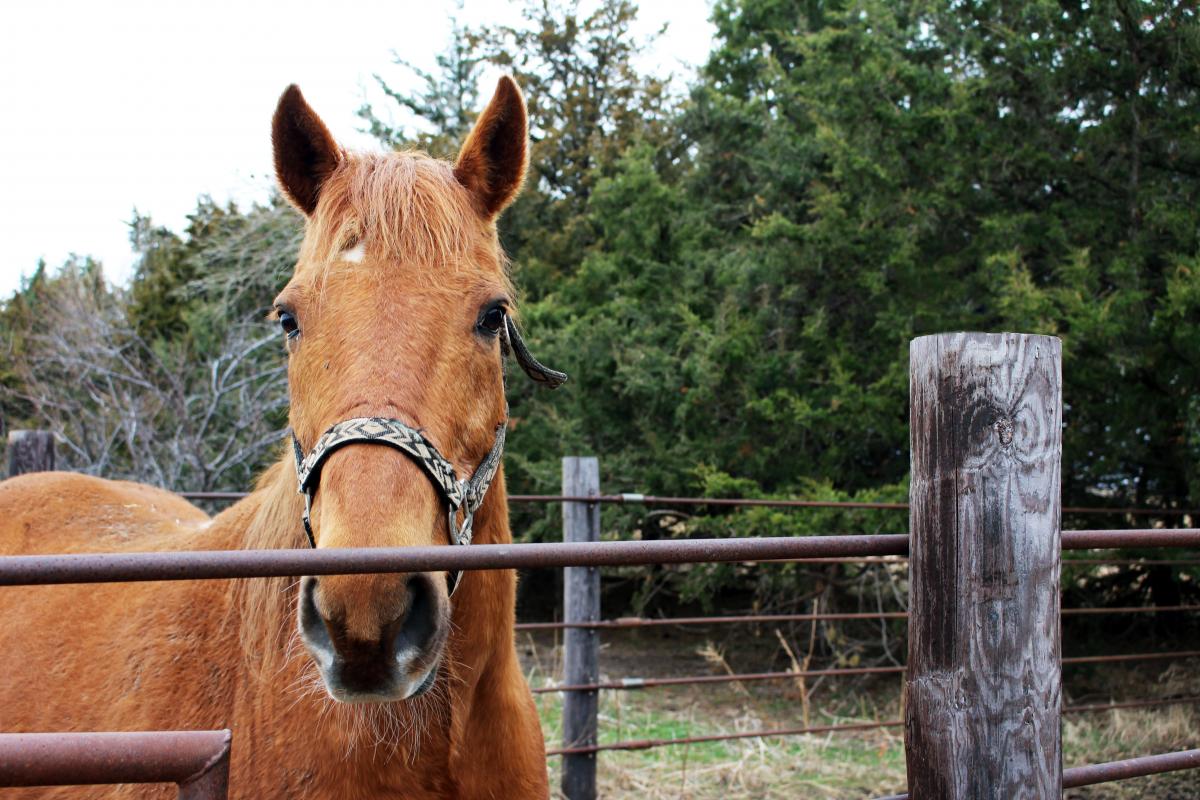
The Upper Big Blue Natural Resources District is committed to helping district residents and landowners see the benefits available through tree planting. That’s why district forester Kyle Yrkoski was recently hired. A lifelong Nebraskan with his roots in agriculture, Yrkoski has a passion for conservation through tree planting. His family has farmed cattle and row crops in the Osceola area since the 1800s and has always been dedicated to planting trees and preserving wildlife areas.
Prior to his role as district forester, Yrkoski spent five years as a water technician for the Upper Big Blue NRD. He also has forestry experience from his previous years with the Upper Loup NRD in Thedford, Nebraska, where he was responsible for designing windbreaks and installing more than 200,000 trees and shrubs, with a 90% survival rate.

As spring approaches, Yrkoski is keeping busy helping landowners plan tree planting projects, whether that be installing a new windbreak in a field or shelterbelt around a home, expanding or repairing an existing windbreak, or planting a wildlife area to improve hunting opportunities.
There are many reasons to plant. Trees around homes conserve energy, improve working and recreational conditions, and provide visual screening and dust control. In an agricultural setting, they can block sound and odors, protect livestock, and increase the production of various crop and food products. The ROI of trees is easy to measure: the proximity of healthy, beautiful trees directly affects property value as good tree cover increases property prices by 7-18 percent, depending on the setting.
With all these benefits, plus countless more, the Upper Big Blue Natural Resources District wants to make it easy and inexpensive for district residents to improve their property through trees. That’s why they offer the annual Conservation Tree Program, providing low cost trees (as well as planting services for large projects). Orders will be collected through March 30 and trees will arrive in mid-April, just in time for spring planting. Call 402-362-6601 or visit www.upperbigblue.org/trees for more information.
The bare root seedlings the NRD sells each year through the Conservation Tree Program are small (usually about 18” high). While some people may choose to plant more expensive, larger landscaping trees purchased from a garden center, Yrkoski notes that the smaller NRD trees very quickly catch up to the more mature trees. “Just like with people, it’s easier to move when you’re younger,” he said. “The NRD trees are babies. It’s not such a big adjustment to move them and they will thrive. But the larger landscaping trees, it’s going to take them awhile to get established and start growing in a new location.”
There are cost-share funds available through the district’s Land Treatment Program for qualifying landowners for the installation or renovation of a windbreak, as well as for the installation of weed barrier around a new planting. Contact the NRD for more details or to apply.
Farmland near Milford improved with windbreaks

Windbreaks: Why bother?
According to the University of Nebraska Extension Office, there are plenty of reasons to plant trees.- Windbreaks are perfect for Nebraska, as they provide the greatest benefits in areas with high winds, large amounts of snow, extreme temperature fluctuations, or minimal natural forest cover.
- Well-designed windbreaks reduce the amount of energy needed to heat and cool your home by 20 to 40 percent. When winter winds are combined with low temps, the resulting wind chill may create dangerous conditions. A moderately dense windbreak will reduce a 20 mph wind to approximately 5 mph out to a distance of 5H (H=height of windbreak). The trees keep you warmer in winter by reducing windspeeds and cooler in summer by providing shade.
- A windbreak can be a natural air freshener. Trees and shrubs act as a natural filter, catching particles that carry odor. Some odors will be absorbed by the plants and others will be masked by more desirable smells from aromatic leaves or flowering shrubs.
- Multirow windbreaks provide essential nesting, feeding, singing and breeding habitat for many birds and animals. They also provide a safe travel corridor for wildlife between feeding, watering, and resting sites. By varying tree and shrub species, you can create a smorgasbord of seeds, nuts, and fruits for area wildlife. They also sustain birds that eat pests, improve hunting opportunities, and provide a place for family outdoor activities.
A young windbreak planting

Many windbreaks planted in the 1930s and 40s are losing their effectiveness due to age, poor health, or neglect. All windbreaks, even well-designed ones, need regular maintenance in order to maintain their overall structure and to continue to function as effective wind barriers. Renovating a windbreak can be a difficult task. Help in assessing your windbreak and determining the best renovation techniques is available from the NRD.
Before you tear out an old windbreak, visit with the NRD to see what could be done to renovate it instead. Perhaps some rows could remain while others could be removed and replanted. New species could be introduced for new purposes. Even if the entire windbreak needs to be replaced, it is better to do it in stages, as the older trees will shelter the younger trees and help them get established more quickly.
Older windbreaks have unique benefits, as they are more likely to be adopted as shelter by hawks, owls, and cavity nesting birds. Snags are trees that have died and possibly lost limbs, but the tops are still standing. Snags are great for wildlife. If they are not where they pose a safety hazard, consider saving part of an older windbreak for wildlife. Owls, woodpeckers, and chickadees will thank you for the additional foraging and shelter.
For the best wildlife benefits, a shelterbelt should have a developed tree canopy and an understory that includes shrubs and herbaceous plants that provide both food and cover. Some plant species provide more wildlife benefits than others and a variety of species is necessary to provide the range of habitat needs of most wildlife. In general, greater windbreak width provides better winter protection. Including a variety of trees and shrubs in the windbreak planting gives a more naturalistic landscape appearance and improves wildlife values for more species. It also reduces the chances of disease or insect pest problems.
A horse enjoys the shelter of a windbreak on a blustery spring morning near York

Windbreak Success
- Windbreak design will vary based on your needs and objectives. A windbreak to block snow around a cattle pen will look different than one created to attract pheasants for hunting.
- A variety of species means your windbreak will stay healthier and be more resistant to insect attacks (like Emerald Ash Borer or bagworms) and other ailments.
- Windbreaks can be given a more naturalistic look and still provide excellent wildlife habitat and wind protection.
- Site preparation and weed control are essential to establishing a successful windbreak. Loosening the soil and removing competing plants like brome prior to planting, then covering the area with weed barrier after planting, will enable your trees to grow with greater success.
- Inspect your windbreaks regularly for signs of insects and disease. Early identification allows for early control of these situation, before damage decreases the windbreak’s effectiveness.
- In low rainfall regions or under drought conditions, supplemental water may be necessary for the survival of newly planted trees and shrubs.
- A field windbreak to protect crops shouldn’t be too dense. Some porosity is important for even snow distribution. A dense windbreak will cause snow to pile up, which means some parts of the field will be much wetter than others in the spring and could delay planting.
- Windbreaks can provide an additional crop if you plant fruit or nuts, or valuable hardwoods like walnut and maple.
- Red cedars get a bad rap. Yes, they can spread and create more work in a pasture setting, but they are the John Wayne of the tree world, says Jay Seaton, a forester with the Lower Platte South NRD and the Nebraska Forestry Service. “Cedars are rough and tough, and they won’t take nothin’ off of nobody,” says Seaton, noting that cedars are the most reliable tree in the forester’s arsenal. They will take the abuse of Nebraska’s winds and weather and will thrive under most any conditions.
- A row of shrubs is a recommended addition in most tree projects, as they grow fast and provide great wildlife food and shelter. They tend to be easy to grow and dense enough to block wind and snow.
- While you may need to water a new tree planting for a few weeks while it’s getting established, you should not need to add fertilizer—ever. Trees that are over fertilized may become a target for pests.
District Forester Kyle Yrkoski pulls back weed barrier around a young tree to prevent girdling
